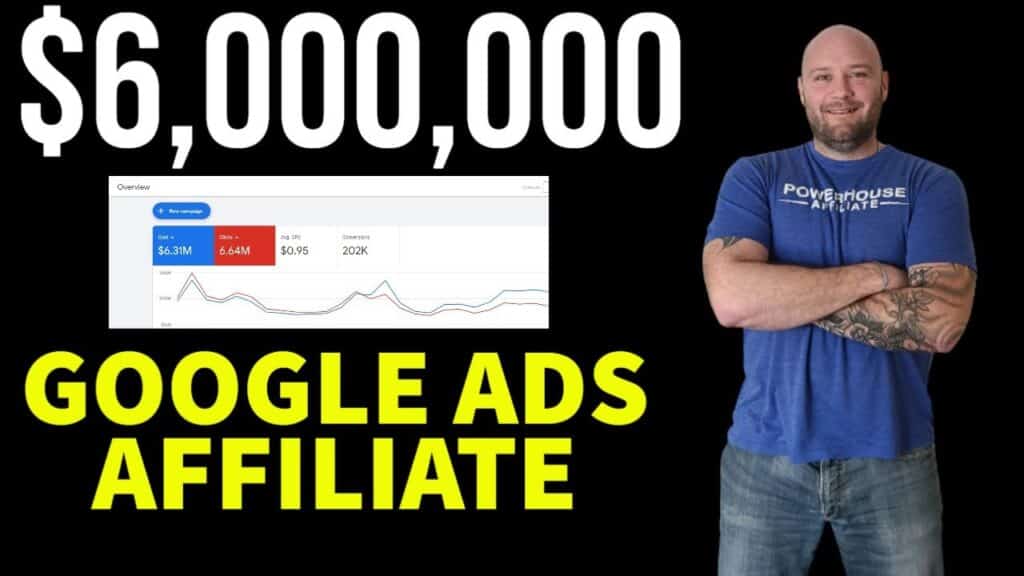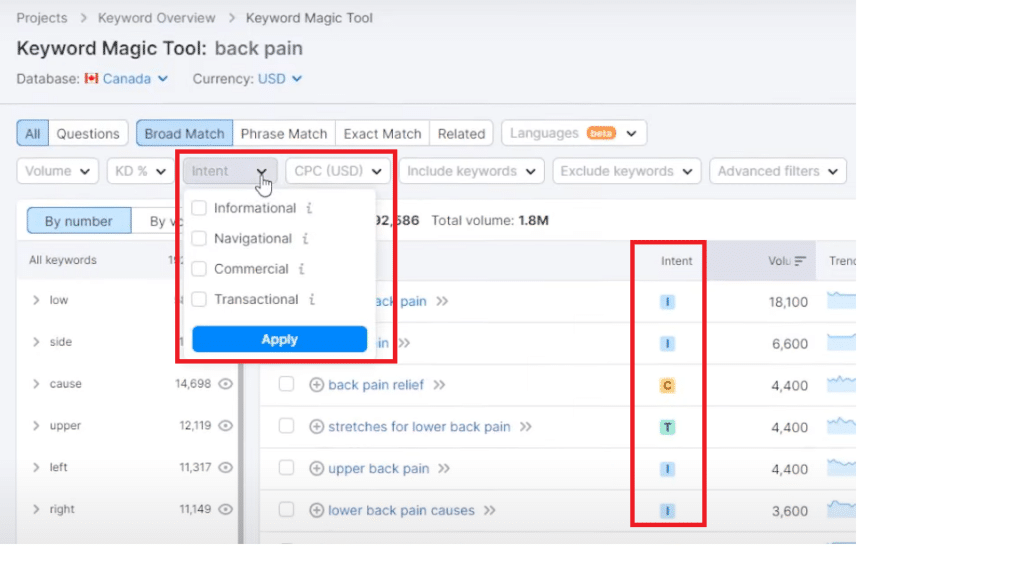
So, you’ve gone over the basics, joined an affiliate program, and learned to choose keywords. Now, the next step in your journey to using Google Ads for affiliate marketing is learning to build high-converting landing pages.
In this post, we’re gonna talk about that.
We’ll cover:
- Why it’s so important to get this part right (and why so many affiliates don’t)
- The step-by-step process to build high-converting landing pages (with a real example in the back pain niche)
This is part three of our $1,000 a Day Google Ads Affiliate Series. If you haven’t seen parts one and two, go check them out:
Before we begin
For those who want even more in-depth details on Google Ads affiliate marketing, check out our 30-day challenge course!
We’ve created this course, assuming you know nothing about Google Ads affiliate marketing, which breaks down all the steps involved in launching and running successful campaigns.

It shows how I’ve reached over six million dollars on ads spend in the past five years running affiliate marketing offers.
It includes a live campaign example, step-by-step instructions on setting up compliant landing pages, and much more that we can’t cover in this post.
If you want to speed things up and enjoy learning from step-by-step formats, I highly recommend checking that out.
Google Ads Affiliate Marketing – Why it’s important to get the landing page right
The quality of your landing page will directly affect your conversion rates.
But more than that, when it comes to affiliate marketing on Google Ads, it’ll also affect your lead generation efforts.
A landing page that engages visitors, provides a good user experience, and matches the ads and targeted keywords gets a higher score on search engines. That translates into:
- Your ads displaying in a higher position
- Higher click-through rates (CTR)
- Lower cost per click (CPC)
Additionally, it’s important to meet all of Google’s destination requirements for advertising.
Many affiliates get all those things wrong and wrongfully assume they’re not allowed to use Google Ads for affiliate marketing. As I’ve shown in parts one and two of this series, that’s simply not true.
I’ve made a video explaining what’s happening to affiliates and why so many are losing their Google Ads accounts:
Google Ads Affiliate Marketing – How to build high-converting landing pages (step-by-step guide)
In this guide, I’ll be using the same offer that I used as an example in the previous posts of this series: a back pain offer related to the sciatica nerve in particular. Many people who suffer from back pain are aware of this problem, making it excellent to generate conversions.
We can find many keywords to target in our campaign through a keyword research tool. Some are a bit broad, like back pain relief. Others are related to specific problems, like sciatica exercises.
One of the great things about this affiliate offer is that it allows us to target specific ones, making our ads relevant and achieving a better ROI.
I recommend Semrush for doing keyword research. It’s one of the best-known marketing tools around and comes with features for SEO, content creation, market research, advertising, and more.
And by using this link, you can go through a free 14-day trial and test it with whatever niche you choose.
With that covered, let’s move to step one.
Step #1: Define your goals
Before building your landing page, you must define your goals. For instance, you can directly sell a product or service, collect leads or subscribers for yourself, or do traffic arbitrage in which you generate traffic to another site and get paid for it.
In our particular example, I have two goals: generating conversions to make commissions and growing an email list that I can monetize in various ways.
For that, I’m using a squeeze page. It has this name because you’re trying to squeeze information out of the visitor, usually their first name and email.
Here’s an example from one of my sites in a different niche:

You’ve probably seen pages like this a lot. As you can see, I’m offering a free e-book and more information about affiliate and digital marketing in exchange for their name and email.
By grabbing the contact information from my potential customers, I can build an audience and monetize it by promoting other affiliate links, my own products and services, and more.
We have an entire email marketing course at Powerhouse Affiliate, teaching you everything you need to know about leveraging email as an affiliate marketer, including how to set up squeeze landing pages, tracking, and follow-up sequences.
Step #2: Have the proper tools
Next, you must pick the right tools to create your landing page and newsletter.
For landing pages, I use OptimizePress, a WordPress plugin that provides dozens of templates.

The great thing about it is that all its templates have been tested and optimized for conversions. All you have to do is adjust them with your copy and offer.
It also connects to email autoresponder services like Aweber, the one I use. This makes grabbing your visitors’ emails and setting up automatic follow-up sequences easier.
I highly recommend this tool to build landing pages that convert more and gain more relevance on Google search ads.
Step #3: Create a compelling landing page
There are a few key elements that every landing page must have:
- Headline
- Subheadline
- Call to action (CTA)
- Images
A strong headline should address a specific pain point or desire, use persuasive language, and be aligned with the overall message of the landing page and offer. It should grab the visitor’s attention and convey a sense of urgency or exclusivity.
If you’re not good at coming up with headlines, you can always use the offer’s page to get inspired (as well as competitors’).
The subheadline is the next key element. Basically, it’s a little blurb about the problem that people are facing. This enables you can do a pre-sell and make them more curious, making them more likely to stick to the page and take your desired action.
Then, there’s the call to action.
Keep it clear, concise, and compelling. Use language and terms that prompt immediate action and align with your desired action. Make sure the CTA stands out visually, uses contrasting colors, and is strategically placed on the page to capture your visitors’ attention.
You can use an AI tool like Jasper to help you with these three elements. Just by selecting the template and telling it about the product or service you’re promoting, it can come up with ideas for the headline, subheadline, and CTA, as well as for the rest of the copy.
Here’s an example when asking for headline ideas for our back pain offer:

Finally, you need good-looking images, one right at the beginning of your page.
You want an image that creates a little bit of mystery and invokes emotions to make people wonder about your solution and think they may miss out on something if they don’t read the rest of your page. It needs to be very attractive and align with the problems you aim to solve and the solution you’re providing.
Step #4: Optimize for mobile
As of 2023, most of the internet traffic comes from mobile devices. Therefore, if you want a good return from your paid traffic, you must ensure your page looks good on them.
That’s pretty easy on OptimizePress. All we have to do is select the mobile preview to see how it looks. We can then make edits without necessarily affecting how it displays on desktops and tablets.

In our example above, the call-to-action doesn’t appear right away. The visitor must scroll down to see it.
As I’ve mentioned, this is one of the most crucial elements of your landing page. If visitors can’t see it right when they enter it, that will affect your conversion rate.
So, I need to make sure that my headline is shorter so the CTA becomes visible.
Check out how it looks now:

This landing page now has all the key elements to move leads to the next stage of the funnel and generate traffic for my affiliate offer.
It has a powerful headling, a screenshot from the advertiser sales letter, a little blurb that sparks curiosity toward the solution, and a CTA to watch a free video. And best of all, it works well on all device types.
When our visitors click to watch the video, they’ll be asked for their email address and will be sent to the offer’s URL where they’ll be sold on the affiliate product.
It’s a little two-step process that enables us to make commissions and build an email list that will eventually make us more money.
Step #5: Test and optimize
The journey doesn’t end there once you’ve built your landing page.
You must constantly test and optimize to improve your conversion rates and maximize your results over time. Minor tweaks can often lead to significant improvements in your conversion rates that you don’t want to miss out on.
Try different variations of your headline, subheadline, media elements, and call-to-action.
A/B testing is the most commonly used method for this. You create two versions of your landing page, differing in just one element you want to test.

You can then compare the performance metrics of both versions, determine which ones perform better, and adjust your page accordingly.
Remember, testing and optimization should be an ongoing process. Keep experimenting with different variations, analyzing the results, and implementing changes based on the insights gained.
Final thoughts
A well-crafted landing page is the key to capturing your audience’s attention, building trust, and ultimately driving them to take action. And from defining your goals to testing different variations, each step plays a crucial role in your overall success.
By following all the steps we’ve shared, you’ll be on your way to driving tons of traffic to your affiliate offers.
In the next post of this series, we’ll start talking about tracking and setting up goals for your Google Ads campaigns. If you want to learn to succeed in affiliate marketing with Google Ads, stay tuned!
And if you want to learn more about Google Ads affiliate marketing from one place, don’t forget to check out our 30-day challenge!


